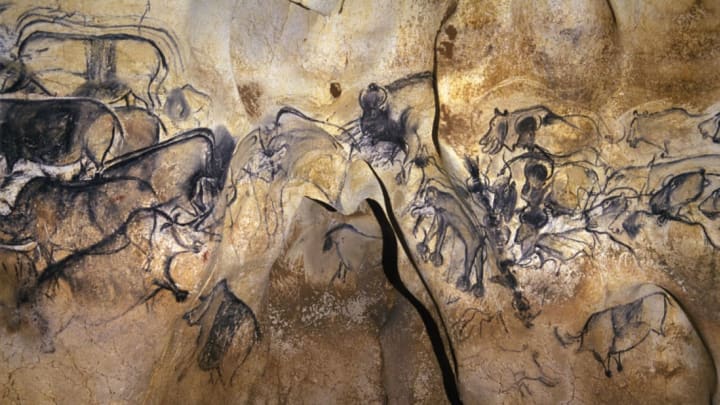Tiny bits of charcoal found in a cave in France are providing new clues into how our prehistoric ancestors lived some 35,000 years ago.
The samples were taken from the Chauvet Pont d'Arc Cave in southern France, whose wall paintings are the oldest in Europe and among the oldest in the world. Few people have ever been inside the cave, which was discovered only in 1994 and remains one of the greatest archaeological discoveries of all time—but some might recognize it from Werner Herzog's award-winning documentary Cave of Forgotten Dreams.
The results of the charcoal analysis, published today in the April issue of the journal Antiquity, enabled researchers to paint a picture of how humans created art in the Ice Age, as well as the bitter climactic conditions of that time.
Researchers collected 171 samples of charcoal from hearths and torch marks in the cave. Other bits of charcoal were found directly beneath the animal paintings, which have been preserved in incredible detail after being sealed off by a rockfall thousands of years ago.

The analysis revealed that all but one of the charcoal samples came from burnt pine trees; the remaining one came from buckthorn. That doesn't sound all that impressive until you consider that some of these drawings were created nearly 10,000 years apart, during two different Ice Age periods. Put differently, for millennia, humans chose to use the same material for the sole purpose of creating art.
Researchers concluded that while other types of wood could have been used, the artists who created these cave paintings continued to choose pine, likely due to the availability of fallen branches as well as its combustion properties. But more remarkably, researchers believe these early artists selected it because it was the perfect medium for their art, ideal "for the smudging and blending techniques used in cave paintings," according to the study.
Over the years, the paintings have been praised for their artistic merit and use of motion. As Herzog commented in Cave of Forgotten Dreams, one artist's rendering of a bison with eight legs suggested movement—"almost a form of proto-cinema."
These findings also reveal what the climate was like during that time, and it was anything but balmy. The researchers write:
"Pine is a pioneer taxon [group] with an affinity for mountainous environments and survived in refuges during the coldest periods of the last ice age. As such, it attests, first and foremost, to the harsh climatic conditions that prevailed during the various occupations of the cave."
To preserve the cave paintings, only researchers are allowed inside the Chauvet Cave. However, a replica of the cave was built in France's Ardèche region and remains open to tourists.
